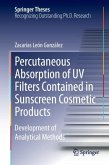This thesis demonstrates how molecular modeling techniques can be used to gain significant insights into numerous applications that are increasingly attracting research interest because of their societal importance. It presents innovative ideas that, by altering the fundamental physical phenomena occurring at the solid/liquid interface, allow the fluid transport in nanochannels to be manipulated so as to improve the performance of the practical applications. The applications explicitly considered in this thesis are the design of drag-reducing and self-cleaning surfaces; water desalination; and shale gas exploration - all of which are, to some extent, governed by nanoscale fluid transport. Overall, this thesis is useful for students and researchers entering the field who wish to understand how molecular modeling can improve the performance in a wide range of applications.








